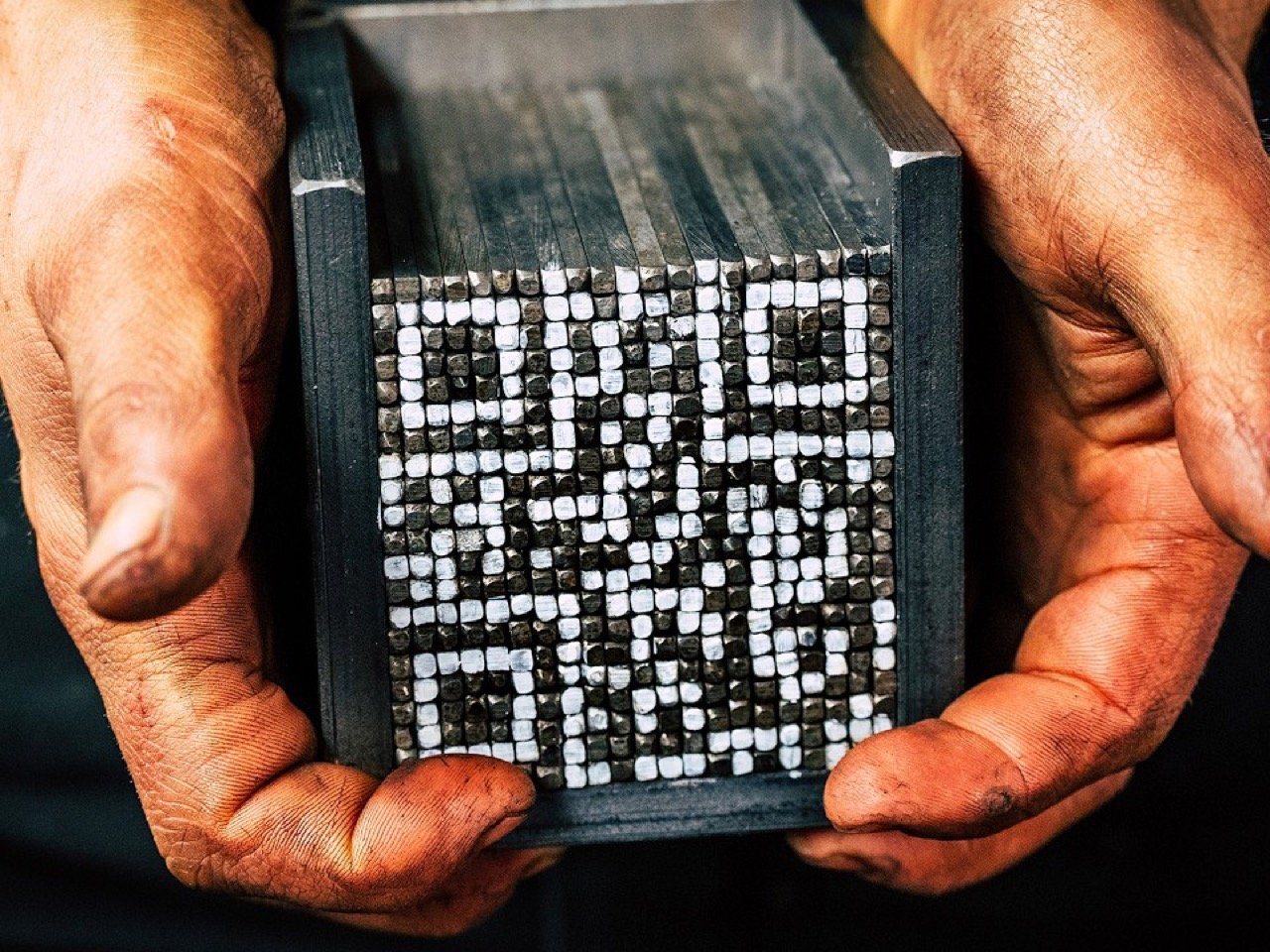Damascus Steel has been having its moment in the EDC realm for quite a few years now. People are simply fascinated by how two (or even more) grades of steel can somehow be combined together, while still retaining their distinct visual properties. For anyone who’s seen Damascus Steel being used in EDC, you’re familiar with that gorgeously marbled pattern that’s created by forging multiple alloys of steel together and then acid etching their surfaces to show the color difference. But here’s a question – can that two-tone property of Damascus Steel be used to create actual images?
Artisans have worked on this experiment, managing to forge unique patterns and grids into their steel (this Rike Knife is a prime example), but YouTuber Alec Steele had another idea – why not use the two-tone property to just make a functional image, something like a QR code? It sounds easy in theory, but making Damascus Steel is a tricky process, and hammering away at the steel to get a solid billet can sometimes warp the designs in unpredictable ways. However, if you’re looking for a TL;DR, yes, apparently you can make Damascus Steel QR codes!
Designer: Alec Steele
QR codes were, believe it or not, invented by a subsidiary of the Toyota group as a way to track parts and cars on the factory floor. Little did Toyota know that this technology would become more popular than their cars, being used by practically everyone with a smartphone on the planet, whether it is to access websites, make payments, or track things online. Although I do have a red hot seething hatred for the restaurant industry mass-adopting QR codes to get out of printing actual menus. Other than that, QR codes are pretty cool if you ask me.
Steele started with the challenge of building a 27×27 QR code, which would ultimately require 729 tiny rectangular strips of steel across both alloys. Cutting metal into channels that slim and accurate is a challenge itself, requiring a fair amount of pre-planning, and even going through a bunch of cutting blades because of wear and tear, as well as inaccurate cuts that made some steel strips thicker and others thinner.
The thicker strips, although unusable in their current states, were still preserved because they could be sanded/ground down to the right thickness. The problem, however, was that cutting and grinding the metal actually resulted in material loss, enough to drastically reduce the number of strips Steele actually ended up with. So the final challenge was modified down to making a 21×21 QR code which required 441 strips instead. Although the trade-off also was the fact that a smaller QR code would store less information.
Once the strips were assembled, they were placed inside their die or enclosure and welded shut, before being forged by a hydraulic press stamping the heated die into one compressed block or billet. Most seasoned forge-smiths will tell you that this is the most challenging bit. A whole bunch of things can go wrong at this stage, from something as small as the pattern warping because of the pressure, and as large as the forging being unsuccessful, resulting in a billet that breaks because the different alloys didn’t adhere properly.
However, the case with making a Damascus QR code is that you really don’t need to worry about steel integrity. Unlike a knife that actually has to experience the sheer stress of heavy-duty use, a steel QR code is just decor. It doesn’t need to undergo any pressure or wear and tear. The warping, however, was a much bigger concern, because anything too drastic and the QR scanner wouldn’t recognize the code.
During the etching stage, Steele busted out his phone to check the QR code and lo and behold – It did scan successfully! After etching, Steele left the initial plate in coffee overnight to exaggerate the staining, resulting in a much more high-contrast final code. Steele managed to extract a few more plates from the overall billet, and sold them on his website, although this particular exercise does set up a new challenge for forge-smiths… Can you successfully integrate QR codes into your knives and handles? If there’s anyone willing to give it a try, hit me up, I’m definitely interested in seeing how it turns out!
The post You can apparently forge QR Codes into Damascus Steel and my mind’s absolutely blown first appeared on Yanko Design.

